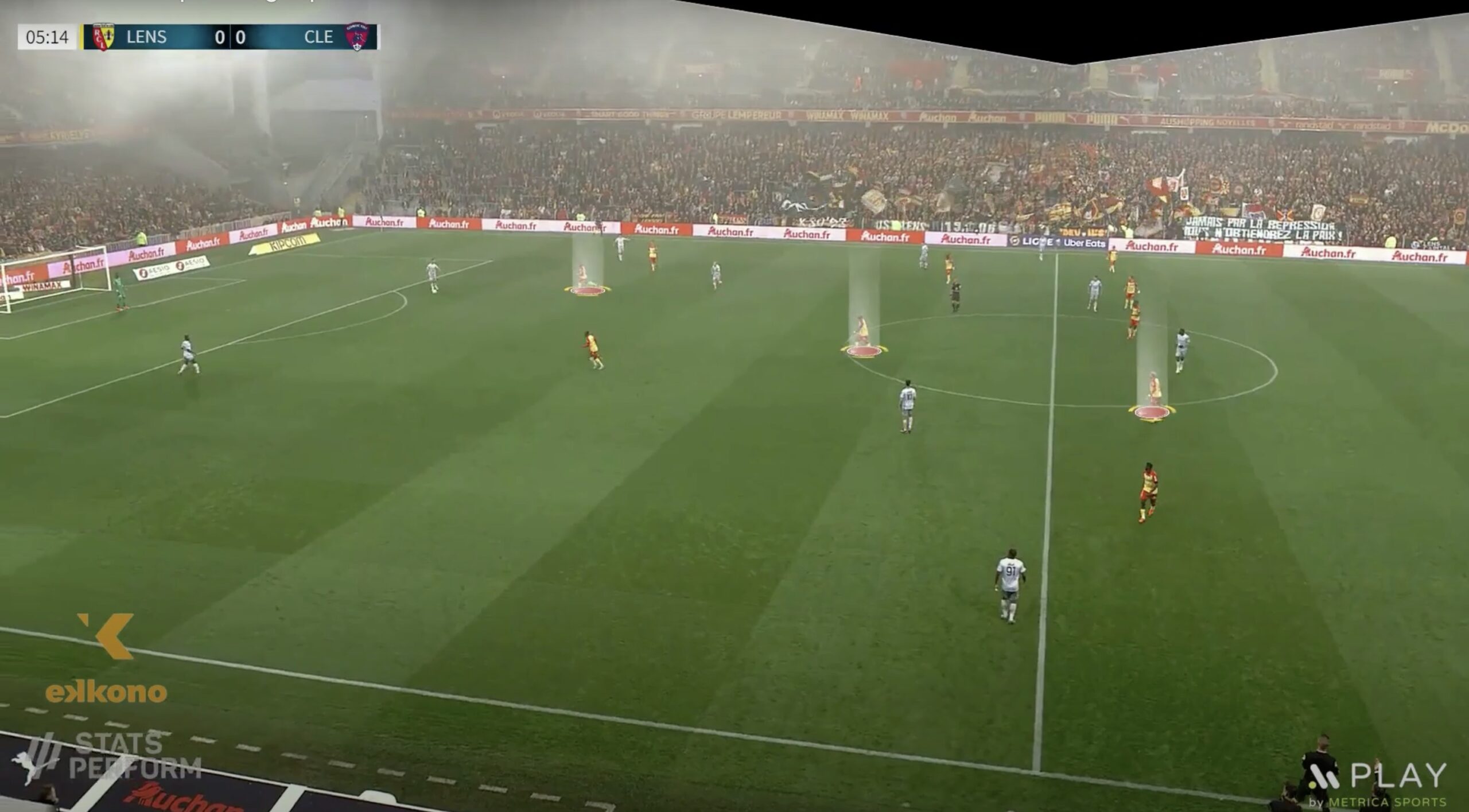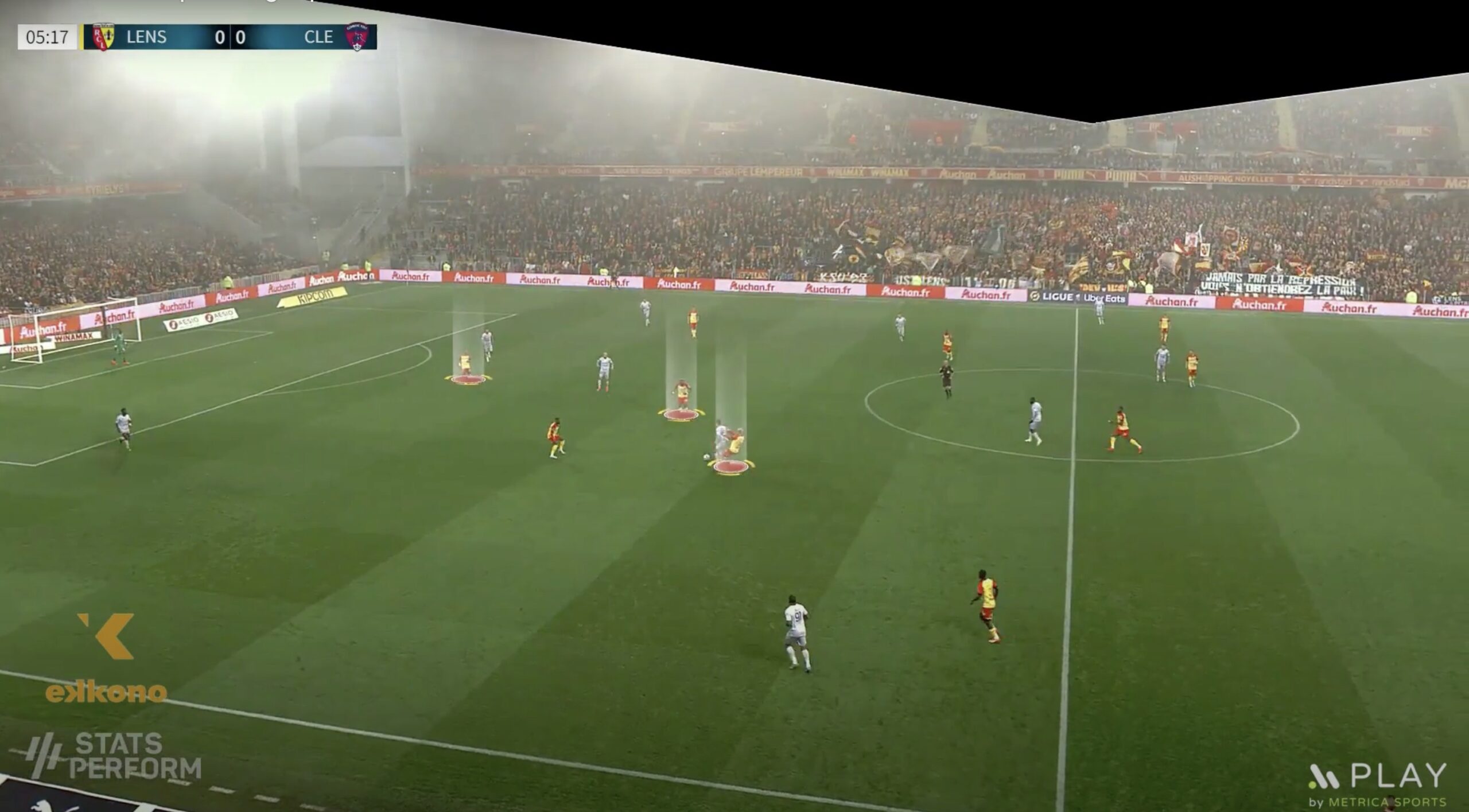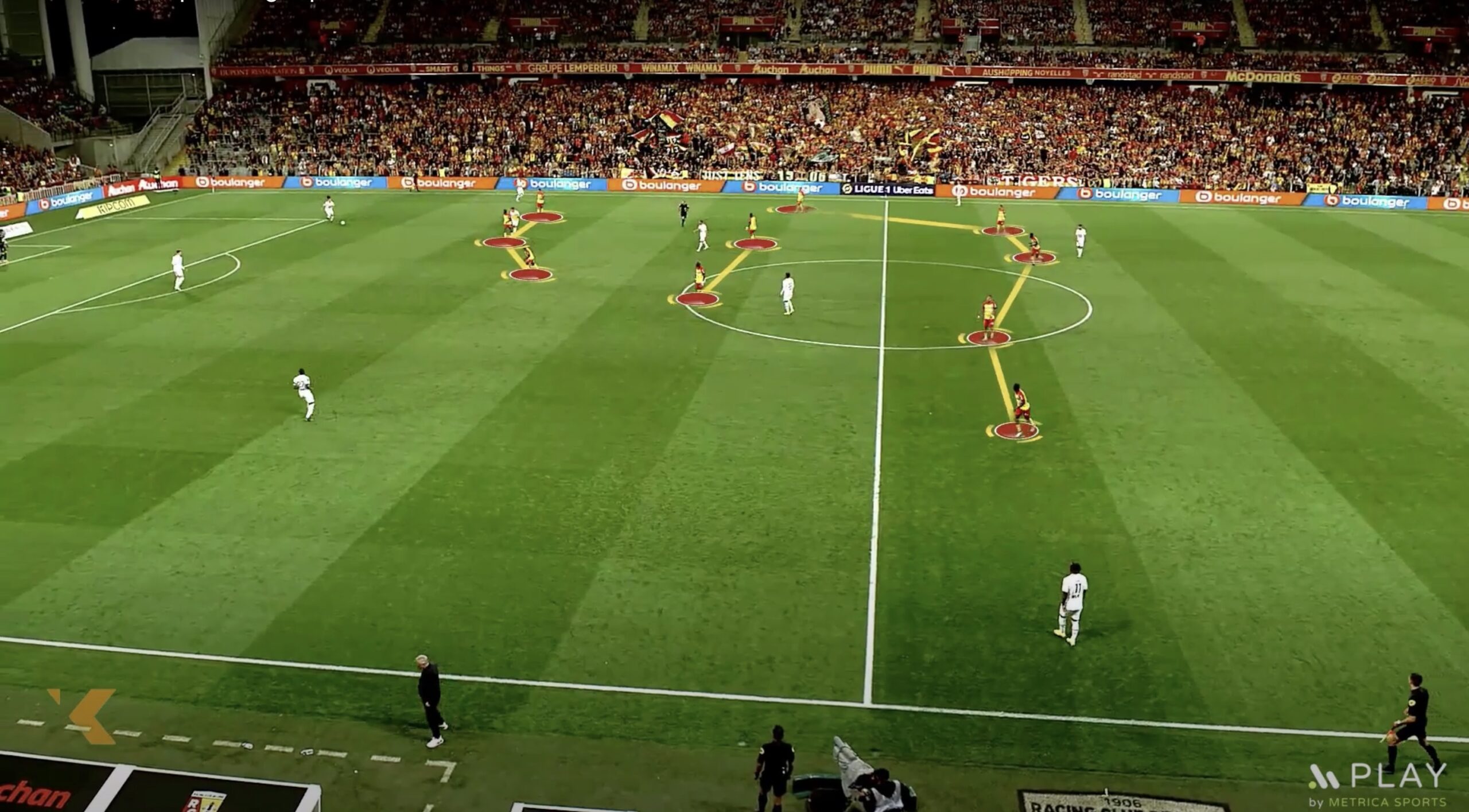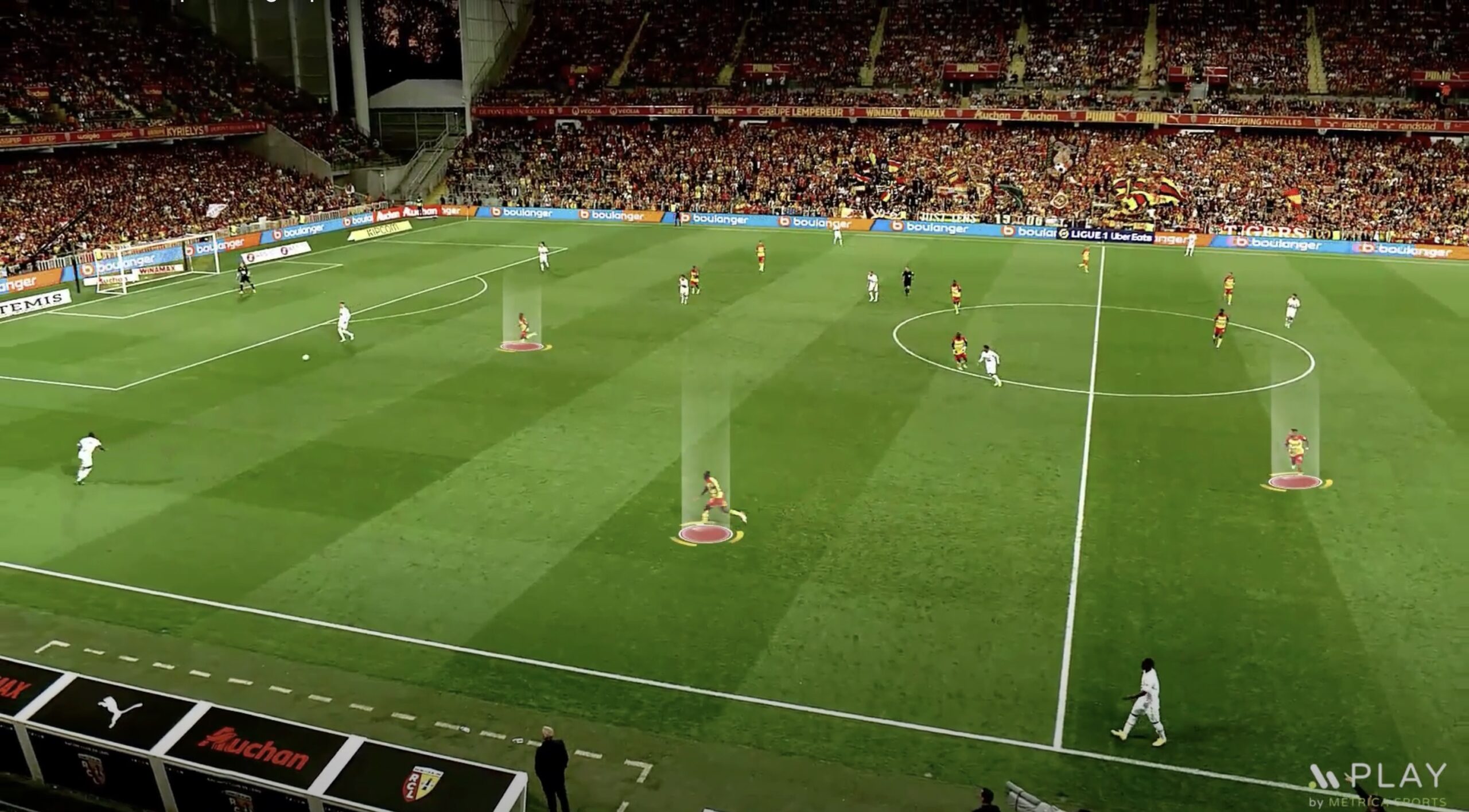
Pressing is an essential component of the game and a characteristic feature of the best teams in the world. In recent years, we have seen how Liverpool or Manchester City have excelled at their high pressing, leading them to recover the ball in the opponent’s field and scoring many goals after those recoveries. Both teams primarily used a 4-3-3 system, which often transitioned into a 4-4-2 during pressing. In this article, we will analyze in detail how to set pressing in a system that uses wingbacks, as many coaches are currently opting for these type of systems. In particular, we will take a close look on how to press in a 3-4-3 system, analyzing what relationships should be between players of different positions such as wingers and wingbacks or striker and midfielders, and how this formation can be transformed in the defensive stage.
Relationship between Strikers and Midfielders
In the 3-4-3 formation, it’s crucial for the striker to disrupt the opponent’s play by obstructing the passing route to their holding midfielder. This is particularly vital when the opposition employs a single holding midfielder. The striker must constantly be aware, frequently checking over their shoulder, to ensure they’re effectively cutting off the pass to the player behind them.
Additionally, the striker plays a key role in initiating high pressing. They must keenly observe the game to recognize the right moment to start pressing, which could be triggered by the opponent’s misdirected pass, poor first touch, or hesitation.
Coordination between the striker and midfielders is essential, especially when the striker presses. Typically, when the striker moves to press, the opponent’s holding midfielder may find some space. In such scenarios, one of our midfielders, generally the one furthest from the ball, should reposition themselves closer to the opposing holding midfielder. The goal isn’t to mark the player individually but to maintain a strategic position that allows for the possibility of pressing either of two potential recipients of the ball.

Defense structure 2
The striker starts from a lower position, from where he blocks the passing line to the opposite holding midfielder.

striker midfielder cb relations
In the moment where the striker jumps to press the center back, RC Lens midfielder supports his teammate and makes a run to be closer to the opponent's holding midfielder. The left center-back will then adapt his position and cover the right winger.
“THE INTERACTION BETWEEN WINGERS AND WINGBACKS IS A CRUCIAL ASPECT OF TEAM DYNAMICS, ESPECIALLY WHEN IT COMES TO PRESS IN A 3-4-3 SYSTEM. IT’S VITAL FOR OUR WINGBACK TO MAINTAIN A CLOSE DISTANCE TO OUR WINGER DURING A PRESS.”
The role of the Center Back
The center back’s role is pivotal during pressing situations. When one of our midfielders needs to mark the opponent’s holding midfielder, leaving a considerable distance to cover, it becomes the responsibility of our center back to compensate. The center back should advance to monitor the opponent’s advanced midfielder. This move is essential to prevent that player from receiving the ball with enough space to turn and face our defense with an advantage.
While some coaches prefer maintaining a balanced backline, avoiding sending center backs to press the opponent’s advanced midfielder, it’s important to note the potential risks. Not addressing the advanced midfielder could disrupt our pressing strategy, leading to our team being forced into defensive retreat and exposing us to dangerous counter-attacks.

recovering the ball 2 example
In this sequence, the striker from the pressing team has jumped towards the center backs and the midfielder has adapted their position. Therefore, it is crucial that our center back moves forward to mark the opponent's advanced midfielder.
Relationship between Wingers and Wingbacks
The interaction between wingers and wingbacks is a crucial aspect of team dynamics, especially when it comes to press in a 3-4-3 system. It’s vital for our wingback to maintain a close distance to our winger during a press. This becomes increasingly important when facing opponents who deploy two players on the flank. In such cases, our wingback should advance towards the farthest player, while our center back adjusts their position to cover the player nearer to our defense. Wingbacks need to be agile in closing down space to prevent opponents from receiving the ball, either directly or via a third-player pass.
Coaches have different strategies for directing wingers’ pressing movements against center backs. If a winger moves vertically, it might leave an open pass to the opponent’s wing player. Alternatively, a winger moving in a circular trajectory from the outside is more likely to block direct passes to the opponent’s winger, redirecting play towards the flank and necessitating a third-player pass. This latter tactic gives our wingback more time to reach the player about to receive the ball, but it can create a numerical disadvantage in the central channels. This gap needs to be filled by the striker, who must assist in defending against midfielders from the opposing side.

Defense structure 1
In this example, we can see how 3-4-3 system transforms into 5-2-3 due to high positions of opponent's wingers. Lens is keeping a narrow block to force the opponent to play to the flanks.

Winger wingback central back connections
Once the opponent plays outside, the wingback shows a good connection with the winger and supports his pressing by jumping to the opponent's right back.
Conclusion
In a 3-4-3 system, effective pressing involves several key roles and coordinated actions. The striker’s responsibility is twofold: they must obstruct the passing routes to the opponent’s holding midfielder and discern the precise moment for the team to commence high pressing. At this critical juncture, the striker aggressively moves to press the center backs, prompting a strategic adjustment in the team’s formation to seal off internal passing lanes. The central back’s role is also pivotal. They must accurately judge when to abandon their usual position from the back three to challenge the opponent’s advanced midfielder. This proactive step is essential to disrupt the opposition’s playmaking opportunities.
Overall, pressing in this formation is a collective effort, which require all 10 outfield players to press as one single unit. However, two player partnerships are particularly vital: the coordination between strikers and midfielders, and the one between wingers and wingbacks. Good coordination of these relationships enhances the team’s ability to apply effective pressure, increasing the likelihood of regaining possession in the opponent’s half. Understanding and executing these strategic elements are key to overpowering the opposition and controlling the game.
Learn more about how to play using the 3-4-3 system. Watch our webinar here..
